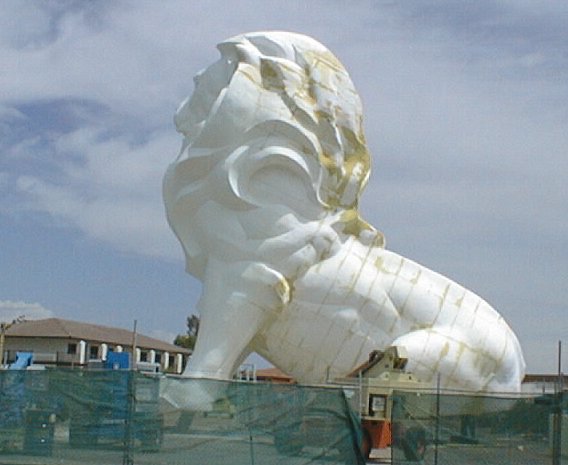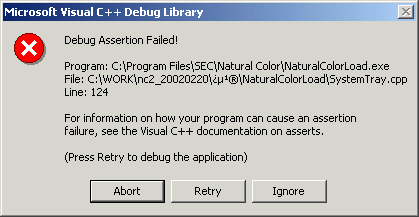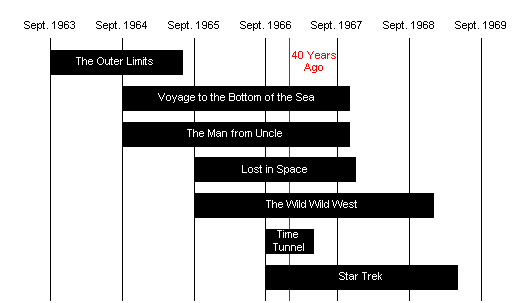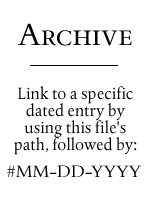|
|
|

|
 February
28, 2007: Odd Lots February
28, 2007: Odd Lots
- Here are detailed
instructions on how to dumpster-dive. I used to do a lot of
what my poor mother called "junkin'" every Wednesday,
when I would drive around the neighborhood on my bike looking
for broken TVs and radios on the curb next to all the trash cans.
I haven't done it for a lot of years, but a great many of my friends
have found some amazing older technology items in dumpsters. If
you're going to do it, do it right.
- WikiHow (see the first item) is an interesting concept all by
itself, and was fun browsing. I especially liked the entry "How
to follow written instructions." It may be obvious to
you, but trust me: It isn't obvious to everybody.
- And while we're speaking of Wiki*.*, let me suggest WikiSky
for one of the best mousable star maps out there. Mouse over a
star and it will tell you its name, position, distance, and magnitude.
Thanks to Pete Albrecht for this one.
- All former Boy and Girl Scouts (and Camp Fire Girls...are there
still Camp Fire Girls?) should take a look at the Science
Scouts Merit Badges. I'm amazed at how many I've already earned...or
perhaps I shouldn't be. Which ones do you have? (Thanks
to Jim Strickland for the pointer.)
- I recently found the cap I had seen on a 1955
Popular Electronics magazine cover, down in Old Colorado
City at a military surplus place, but if you can't find them locally,
here's a
site that sells more military caps than I ever imagined existed.
Mine is black (it looks exactly like the Army Ranger cap shown
as the very first item) but I confess I like the North Carolina
blue one. I guess the generic term for these is "fatigue
caps." Mine has a touch of military inscrutability about
it: The label says "Cap, Hot Weather" and yet it has
fold-down ear flaps. Go figger.

|
 February
26, 2007: Odd Lots February
26, 2007: Odd Lots
- The Make Blog aggregated
a
page describing "drilled chili beef." Basically,
you freeze a beef roast, drill a bunch of 3/8" holes down
its long axis, and then stuff some appropriately shaped chilis
into the holes. (They're called "finger chilis," looks
like—dunno, don't eat them myself.) Roast the beef. Oh—and
scrub that drill bit first!
- CodeGear (the programming tools spinoff from Borland) has announced
Delphi
for PHP. Not a lot of details yet, but it sounds fantastic—especially
the part about a PHP component library. I fooled around with PHP
and set it aside because of the masochististic tool set (or lack
of a tool set) that made it smell to me like it was more trouble
than it was worth. A $250 Delphi for PHP could change that. Now,
how about Delphi for Flash?
- I just received the last of the 119 issues of Popular Electronics
that contain Carl & Jerry stories. Many thanks to Doug Faunt,
N6TQS, for providing the final six that I was missing. Volume
2 should be available in a few days, and now there's nothing to
stop me from getting all five volumes into print this year.
- I've complained a number of times that there is no competitor
for Microsoft's Visio, but that's not entirely true. TheKompany
offers Kivio, a program similar enough to make me want to
try it, though as best I can tell there's no ability to import
and export existing Visio drawings or stencils. (Visio has always
kept its file formats a very dark secret.) It's available for
Linux and Mac. The software itself appears to be open source;
TheKompany is hoping to make money selling its "blades"
(a custom package of shape stencils) rather than the software
itself.
- Sigh. Wikipedia has found a
mechanical perpetual motion machine notable enough to give
its own page. Oh—and a
separate page to its "developer." It looks like
a pretty typical "magnet motor" to me (I've seen writeups
of any number down through the years) but that doesn't grant an
exemption to the First Law of Thermodynamics. As is typical, little
is being revealed about the device. It's a scam, and if it belongs
on Wikipedia, so does just about anything else you could name.
(Thanks to Mike Reith for the pointer.)

|
 February
25, 2007: Foam Lion, Bronze Lion February
25, 2007: Foam Lion, Bronze Lion

Back in 1995, The Coriolis Group was a smallish upstart publisher
with offices in the showroom of a defunct dealer of designer plumbing
fixtures. (You know, Bold Look of Kohler kind of stuff.) One day,
down the street in our office/industrial district, we noticed a
large shape being carved out of many big blocks of stiff plastic
foam. At some point it became clear what they were carving: A 45-foot
lion. We were working up the nerve to knock on their door and ask
just what they hell they were up to when the local paper ran the
story: They had won the contract to create the largest bronze sculpture
in the western hemisphere. It was to be set at the entrance to the
MGM Grand hotel/casino in Las Vegas. The foam was a mold, from which
were created 1,600 casting patterns, which were then separately
cast in bronze and then welded together. It's unclear where the
welding took place, but I doubt you could get the damned thing from
Scottsdale to Vegas on a trailer.
The lion was finished and put in place in 1997, and ever since
then Carol and I have wanted to go see "our" lion. This
past week (as I explained in my February 22, 2006 entry) we finally
got there, and stayed at the MGM Grand. The lion is shown below.
It is indeed immense, its gravitas greatly enhanced by being made
of 100,000 pounds of bronze and not just a big gob of Styrofoam.

(The angle isn't quite the same, but I couldn't get a good shot
of the bronze lion from where the angle would have been comparable.
Trust me, it's him.) Pete Albrecht commented that the view I showed
a few days ago looked unreal. Well....that's because the sheer amount
of money that flows through Las Vegas creates a field that distorts
reality in weird ways. A lot of it is ticky-tacky, but the surprising
thing is how serious some of the ticky-tacky actually is.
That's not a plaster lion slobbered up with bronze paint. That is
a real, 100,000 pound, 45-foot bronze lion, and the 1/2 scale replica
of the Eiffel Tower down the street is real steel. (Its weight is
not published.) The amount of marble, glass, metal, and sheer chutzpah
in that place will take your breath away.
Gambling is not my thing, but monumental weirdness, well, hey—that
I can connect with.

|
 February
24, 2007: Living in the Cross Hares February
24, 2007: Living in the Cross Hares
 Pete
Albrecht has been razzing me for years now about moving to a location
in the database of every Russian nuclear-armed submarine. I can
walk to within a few hundred feet or so of the legendary NORAD
entrance, which is a hair over a mile from my house here in Colorado
Springs. (I could probably get closer but they'd shoot me.) Pete
Albrecht has been razzing me for years now about moving to a location
in the database of every Russian nuclear-armed submarine. I can
walk to within a few hundred feet or so of the legendary NORAD
entrance, which is a hair over a mile from my house here in Colorado
Springs. (I could probably get closer but they'd shoot me.)
So Pete decided to make me a coat of arms. (Left.) Two hares rampant
with a Greek cross on a field of green and gold, which I suspect
Pete chose because they were our high school colors at Lane Tech.
I wish I could find the sketch of the arms that Yale hacker Larry
Stone drew up for me in 1983, which starred Mr. Byte as "frise
rampant" and included a linked list 'o sausages (as he put
it) and a hot fudge sundae. I had used a string of sausages as a
metaphor in explaining linked lists in Complete Turbo Pascal,
but the significance of the sundae escapes me now.
I moved to Colorado Springs fully aware of the conceptual hazards,
and actually relish them a little. I worry a lot less about the
Russians these days than most of us used to, and as I've said before,
our coastal cities are the ones where terrorists could buy an old
tugboat, fit it out with a crude nuclear weapon, and take out the
city without a lot of trouble. Getting that tugboat to the Springs
would be a problem.
Besides, NORAD's
HQ under the mountain has been mostly mothballed; its real work
is now being done on an air force base somewhere. It's unclear that
the Russians will be updating their submarine databases any time
soon, but MAD works well enough to suit me. The air and water are
clean, street crime far lower than in most comparable cities (living
among many retired military officers will do that) and damn, I have
this great mountain right outside my front door. Not a lot of hares
here (and maybe a few too many crosses) but for the most part, life
in the cross hares is good.

|
 February
22, 2007: Las Vegas, After 13 Years February
22, 2007: Las Vegas, After 13 Years

Carol and I are in Las Vegas for a couple of days, just getting
out of the house on a quick trip while I talk to a local firm about
a consulting gig. We're not classical Vegas types: We don't gamble,
we don't drink very much, and the megaportions served in most restaurants
these days give us indigestion. (Oh, and we hate to waste food.)
Still, I really wanted to see how the place has changed since
I was last here for Comdex 13 years ago.
Comdex was a can't-miss for me from 1985 until 1994, when it began
to splinter under the weight of a tech sector exploding in both
breadth and depth. Carol's parents would often schedule their Vegas
vacation during Comdex, so Carol could hang out with them during
the day while I dodged PR flacks and tried to figure out which way
it was all going. It was fun, if exhausting, and a notable conversation
I had with Keith Weiskamp on the steps of the main exhibition hall
in 1988 led to the creation of The Coriolis Group and PC Techniques
magazine. We got a nice room cheap at the MGM Grand, and looked
out the window yesterday morning at a Las Vegas Strip that was almost
nothing like it was our last time through.
The Luxor, the Mandalay Bay, Hooters, and New York, New York weren't
there the year we last stayed at the Tropicana. Nor were the behemoths
further north on the Strip: The Bellagio and its dancing water,
Paris Las Vegas and its Grand Republican Balloon and half-scale
Eiffel Tower, nor Wynn and its huge LED billboard on which an animated
steampunk robot arm scrawls showtimes and other short messages in
between commercials. Another titan hotel casino, the Palazzo, is
going up as we speak. Ceasar's Palace is there but looked odd to
me, and then I realized that its original hotel had been torn down
and replaced by several even bigger towers.
Carol and I did an interesting thing yesterday: After sleeping
in (which for us means until 8:45 AM) we had breakfast and then
boarded the monorail that runs just east of the Strip and provides
easy access to all of the big properties along Las Vegas Boulevard.
The MGM Grand is its southern terminus, and we took it all the way
to its northern end at the Sahara. Then we walked back down the
full length of the Strip, ducking into casinos here and there just
to see what the current state of things might be.
My slightly startled insight was this: Coins are extinct.
My first impression of Las Vegas (which I never saw until I was
sent to Comdex '85 by PC Tech Journal) was the constant impact
of coins and tokens into the stainless-steel pans beneath every
slot machine. Slot machines made electronic noise and even crude
music in 1985, but those sounds were drowned out by the hammering
of metal on metal. I've commented on this before (see my entry for
August
15, 2006) but I still found it arresting. We did not see a lot
of people at the new-style, ticket-based slot machines. The only
coin machines we saw on our entire several-mile walk were a couple
of ancient ones at the downscale Slots-a-Fun, and although I had
some pocket change for a nostalgia run, we couldn't get near the
machines themselves.
My second major insight came after looking at casino restaurant
menus: Vegas isn't cheap anymore. Twenty years ago, food
here was of indifferent quality (on the order of the Old Country
Buffet chain eateries) but it was abundant and cheap. Now there
are major five-star restaurants (with seven-star prices) everywhere
you look. Even the monorail was five bucks a ride, and we overheard
much talk of seven-dollar beers.
I'm guessing that the Vegas business model is changing. The big
draw used to be the gambling. Food was to keep you alive, and drinks
were to keep you gambling. Now, the big casinos have found that
people are willing to come here for the sake of Vegas itself, for
the spectacle, the food, and the shows. The rooms are better, the
food much better, the shows almost beyond belief.
A lot of the old standards along the Strip are gone. The Desert
Inn was razed to make room for the Wynn. The Sands has been gone
for a long time, the Venetian in its place. The affordable Westward
Ho was razed not long back, and we walked past the sad, half-demolished
corpse of the Stardust. The Aladdin is undergoing a massive facelift.
The Dunes fell so that the Bellagio could rise. The Hacienda made
way for the Mandalay Bay. The Sixties-futuristic Landmark was filmed
as it was imploded, lights still blazing, and the footage used in
Mars Attacks. Since then it's been a parking lot. Bob Stupak's
Vegas World was razed, and the Stratosphere put in its place, including
amusement park rides 1,000 feet over the Strip. (You ride. I'll
watch.)
Another interesting change is the intrusion of huge high-rise condos
along the strip. Not every tower is a hotel/casino. Something called
City Center is going up (I don't know what died to make room for
it) as a cluster of condos and timeshares. I doubt this would work
if the entertainment attraction of Vegas were only gambling.
I can understand the business advantage of coinless slot machines.
Managing tons of coins on a daily basis must have been expensive,
and machines with fewer mechanical parts must run a lot longer between
failures. The new video machines are certainly more varied and interesting.
Besides (as I've discussed here a few times) US coins in common
use (half dollars are almost extinct and dollar coins not widely
used) don't have a lot of value anymore. One wonders if coin-action
slot machines would make a comeback if a $2 or $5 coin were in wide
use.
We're taking it a little easier today, and after a lunch meeting
we're going to sit by the heated pool for awhile before seeing a
magic show tonight. Then tomorrow it's back to Denver for a quick
visit to a model train show and then home again. I'm sure we'll
be back; the Vegas of 2007 is a lot more diverse and interesting
than the Vegas of 1994. Expanding beyond gambling was probably the
smartest thing they ever did, since they can get people here who
wouldn't have come only for the gambling. And even stodgy
non-gamblers like us will put the occasional fiver into a slot machine.
I miss the echo of dropping coins a little. Sometimes I wonder if
money is getting a little too abstract—but that is almost
certainly a one-way street, and no monorail will take us back.

|
 February
18, 2007: Odd Lots February
18, 2007: Odd Lots
- Pete Albrecht sent me a link to lala.com,
which is a site coordinating the sale of used music CDs. Here's
a
nice description of the system. It's a little like NetFlix
for music, except you don't have to return the CDs. The music
industry predictably hates it, but as no music moves across the
net (and the rule of First Sale unambiguously applies to music
CDs) this one may stick.
- Also from Pete comes word that Wikipedia has published a whole
entry on Salmon
Pink. (This is worth seeing for the table of pinks at the
bottom.) Intrigued, I looked up Burnt
Sienna and Raw Umber, but Raw Umber did not have its own Wikipedia
page, and while listed it was not sampled in Wikipedia's List
of Crayola Crayon Colors. I guess it's not notable enough.
- There's a
new naked-eye nova in the constellation Scorpius. Look quick,
as these
things do not last forever, and it is already dimming down.
- I stand slack-jawed in the online presence of this.
It's a periodic table of the appearance of chemical elements in...comic
books. Damn. Nothing for Ytterbium.
- Here's a great concept that someone
took to its logical conclusion: Take all of your wall
warts, power bars, routers, Wi-Fi access points, and other associated
desk dreck and tack it to the undersurface of your desk. I actually
tried this recently, but I used Velcro tape instead of twist-ties,
and the tape adhesive (not the loops and fuzz) gave way after
several days. My four-port Ethernet switch is still sitting cockeyed
on the floor.
- The (tentative) schematic of my latest radio project is here.
(Flash document.) It's a 1-tube FM broadcast radio. I'm adapting
it from an aviation band AM receiver published in Popular Electronics
in July, 1962. A grade-school friend of mine built this when we
were thirteen, and I recall it working quite well, at least for
the 707s roaring overhead every 75 seconds. I'll tweak the circuit
as required and repost it here, with photos, once I perfect it.

|
 February
17, 2007: AdSense One Year In February
17, 2007: AdSense One Year In
I started using AdSense ads in my various Web pages here on Feb.
16, 2006. It's been a year now, and a closer look has been instructive.
(See my February
22, 2006 entry for a summary of my thoughts going in.)
My original idea was to see if a writer can make money on the ad
model. Most of the places I used to sell short technical pieces
are now gone, and the computer book market is all but dead, for
various reasons, some of them still obscure. (Excess capacity from
the 90s is the worst of it—hand-in-hand with the fact that
our Windows systems have now been mature for at least seven years,
and people have all the Windows 98 and 2000 books that they'll ever
need.) My site gets a fair amount of traffic: Taken together, my
several live domains get between a third and a half million page
hits per month. Duntemann.com alone gets an average of 12,000 unique
visitors per month. My logic went like this: If I succeed spectacularly,
others can too, but if I fail spectacularly, the AdSense system
may be too fluky to invest much time in.
So. Much now depends on how you define "success."
I shake my head sometimes looking at Googls's output reports. When
I began placing AdSense ads (as a part of the general upgrading
of the look of my Web pages, some of which go back to 1995) I remember
thinking, "Well, if I can make a dollar a day I'll be happy."
And voila! Month after month, my monthly and running averages
never strayed more than a few pennies from a dollar a day. It makes
you wonder if there really is something to that New Age "Law
of Attraction" BS. (I suspect if I could force myself to
write books about the Law of Attraction, I'd make considerably more
than a dollar a day.)
The average for the year was $1.02 per day, for a total of $371.65.
My hosting costs came to $203.40 for that period, so I cleared $168.25.
Now, I wrote none of the articles specifically to make money with
AdSense, and almost certainly would have written them anyway, so
in a sense it was free money and worth grabbing. Adding AdSense
ads is certainly trivial enough (basically cut here, paste there)
assuming you left space on your pages to hold them. I will confess
it was motivation to redesign my general Web presence, which had
been pretty ugly prior to 2005.
It's also interesting to stack up how individual pages did, ad-wise:
The big surprise here is my homebrew radio gallery, which is nothing
more than photos of things I've built over the years, plus brief
descriptions. No technical data, no how-to. Just pictures. It doesn't
even get that much traffic; typically 15% of what the Contra main
page gets, and yet it generally earns about 50% more than Contra,
taking out the spike that came in when Boing Boing aggregated it
last May. The take for the article I wrote on Turbo Delphi is an
anomaly, because it all came in within a few weeks of the page's
mounting, when people were the craziest to figure out how to install
it.
I think the key is pertinent ads. When viewing the Homebrew Radio
Gallery, it shows ads for tubes, test equipment, and other things
that people interested in tube projects might want. At the other
end of the scale, the ads placed on "Understanding 'Lyke Wake
Dirge'" are virtually all mistakes, keyword ads that misinterpret
the keywords on the page. "Wake Forest Real Estate" advertises
there a lot, as does a puzzling ad offering "SQF Audits for
Cereal" that promise to "Wake up your sales!" (One
wonders what a cereal auditor does. I can't just go look; you can't
click on your own ads.)
I suspect I could do better by deliberately writing Web articles
about mainstream products that people are more likely to research
than a 14th century English folk melody. If time allows I may try
that. But I've also noticed that revenue per click-thru is drifting
downward, which is why my total average revenue has stayed the same
even as I've added more pages and attracted more traffic. I think
that Google searchsquatters (who typically scrape content verbatim
from Wikipedia and surround it in AdSense ads) are gradually scaring
off the advertisers. AdSense works for low-traffic sites like mine
because it's almost entirely automatic. Subversion may eventually
kill it; the money isn't there for proctors to monitor where the
ads go. The big money is in ads placed deliberately on big-traffic
pages, and eccentric topics like those I cover don't attract big
traffic.
Bottom line? I'm sticking with it, and with some luck I'll continue
to get a dollar a day. I said I would be happy with that, and I
am. It's not like I have to live on it, but as a writer who used
to get at very least hundreds and sometimes thousands of dollars
for magazine articles, that's scant comfort.

|
 February
16, 2007: Carl and Jerry, Volume 1 on the Make Blog! February
16, 2007: Carl and Jerry, Volume 1 on the Make Blog!
I love waking up to nice surprises. This morning's was finding
that the Make Blog had
posted a
cover shot and pointer to Carl and Jerry, Volume 1. I've been
having an email conversation with Phillip Torrone, the editor over
there, and he's asked me to do some additional material about Carl
and Jerry, for posting in the blog and perhaps in Make Magazine
itself.
Volume 2 is now in the "uncorrected proof" stage, and
I'm plowing through it looking for OCR errors, widows, orphans,
and misspellings that I didn't get the first time (or two times,
or three times) through. The copy editing and proofing in the old
Popular Electronics of that era was pretty light, and there
are a surprising number of typos and other weirdnesses in the published
text. I'm not doing any significant copyediting on Frye's text,
but I am fixing obvious errors and misspelled words. There are some
vexing gray areas: Like many writers, he had problems with "which"
and "that" and I'm never entirely sure whether to fix
things or simply allow them to remain as they were.
Volume 2 is on track to become available March 1 or very
soon after. Volume 3, we're looking at mid-April. After that, all
bets are off, but I'm still intending to get all five books out
this year.

|
 February
15, 2007: My Old Friend, the Assertion Error February
15, 2007: My Old Friend, the Assertion Error
 At
left is an error dialog that pops up on me every so often. It comes
from the utility that adjusts color on my Samsung SyncMaster 214T
LCD display. It doesn't pop up every time I boot, but I see it enough
to consider it an old friend. At
left is an error dialog that pops up on me every so often. It comes
from the utility that adjusts color on my Samsung SyncMaster 214T
LCD display. It doesn't pop up every time I boot, but I see it enough
to consider it an old friend.
I don't need anybody to explain what this means. It's a consequence
of a distant descendant of the writeln statements we used
to put in code to track what it's doing. An assert is basically
the programmer telling the program: "At this point you had
better be doing X, or you will crash gracefully and dump me into
the debugger so I can figure out why not." (Here's a
more detailed writeup.)
No, what I'm curious about is how many of you see assert dialogs
like this on a regular or semiregular basis? I see this one a lot,
but it's the only one I've seen on this machine. Assertions should
be removed before a program is released to the public, but I'm sure
quite a few of them sneak out—though you'd think a gazillion
dollar Asian hardware monolith would be maybe a little more
careful.

|
 February
14, 2007: Everywhere, but Not Notable February
14, 2007: Everywhere, but Not Notable
Earlier today Slashdot aggregated an article on Wikipedia entitled,
"Wikipedia
Is Failing," which actually points up one of the strengths
of Wikipedia: That a weak and slightly whiny opinion piece (not
even an article in any sense of the word) could be mounted there.
There have always been gripes about Wikipedia, usually in comparison
to print works like the Encyclopedia Britannica. This puzzles
me, but it's a familiar puzzler. People sometimes bitch at me that
Assembly Language Step-By-Step is flawed because it's too
elementary and doesn't go far enough. Um...it was created to be
elementary. It's precisely as elementary as I meant it to be. Not
liking something (and especially not liking something because it
isn't quite what you want it to be) is not useful criticism.
And Wikipedia is like nothing else on Earth. It's not an
encyclopedia in the sense that Britannica is. Thank God for
that. It fills an ancient need that wasn't possible to fill before
the Internet: to provide a web of factual context embracing all
human knowledge and all human experience. As others have said, Wikipedia
isn't the endpoint for online research. It's only the beginning,
but it gives you an overview and enough comprehension of the topic
at hand to allow any reasonably sharp person to begin doing real
research, both online and in print works. I have wanted it for many
years, since before the Web was more than a curiosity, and in fact,
the first time I saw the Web I knew it would happen eventually.
(See my 1994 essay, "The
All-Volunteer Virtual Encyclopedia of Absolutely Everything."
What I described was more like Open Directory
than Wikipedia, but that was a consequence of expensive disk storage.
I did not anticipate terabyte hard disks in 1994.)
Most of Wilipedia's problems that people cite are amenable to simple
fixes. Just requiring registration to post or edit would be a huge
advance. Requiring several thumbs-down votes to delete an entry
would also help, perhaps as part of a well-thought-out community
feedback system. Right now, anybody can delete an entry unless it's
been locked by one of Wikipedia's gods, and that's something that
needs to be fixed. But Wikipedia's biggest problem is actually at
a higher level than Web programming: the simple idea of "notability."
If something is judged as "not notable," it's off into
the bit bucket.
Here's an example: Years ago, a woman undergrad at Reed College
posed for a set of stock photos to make a little money. Ten years
later, those stock photos have been used in ads by so many different
companies that poor Jennifer Chandra now has a nickname: The Everywhere
Girl. The affair is a textbook argument against the use of stock
photography in brand-intensive advertising, and something every
newly-minted marketing flack needs to know about. (Is she the Dell
Girl? Or the HP Girl? Or the Gateway Girl? Or...)
I didn't read about the Everywhere Girl on Wikipedia. People have
tried writing the topic up, but one single person has repeatedly
deleted the entry on the grounds that it is "not notable."
It's impossible to tell if this person is simply clueless, or has
an agenda. (Maybe he's an old boyfriend.) The issue is not about
Jennifer Chandra. It's about the dangers of stock photography. When
you are about to invest $100,000 in an ad campaign, that's real
damned notable.
The Wall Street Journal had a piece on Wikipedia's notability
obsession a month or two ago, and Wikipedia did not come off well.
We're not just talking about garage bands or local recipes here.
Elected officials have to be of a certain tenure and importance
to be in Wikipedia. You don't automatically qualify by being elected
to a city council or state legislature. WTF? Meatwad
from Aqua Teen Hunger Force has his own page on Wikipedia,
as does Carl,
who isn't even one of the cult cartoon show's title cadre. I don't
mind reading about Meatwad on Wikipedia. I actually don't mind reading
about anything. If I don't look for it, I don't see it. If I do
look for it, there's no reason for it not to be there.
"Notability" cannot be defined. Neutral point of view,
sure. I learned about NPOV within a week of being hired on to my
first job as a magazine editor; it's Journalism 101. But allowing
any one person to judge the notability of any arbitrary topic is
ridiculous. Worse, it's unnecessary. Wikipedia raised over a million
dollars last year, and that will buy a lot of hosting. Text is very
compact. I would accept a policy stating that "everybody gets
500 words" and allow editing of overlong entries to something
below that length. (I would like to see at least three votes required
to make that decision, however—and the ability to vote in favor
of keeping an entry long.)
I don't look to Wikipedia for unbiased detailed writeups on controversial
topics; generally, those topics are better covered elsewhere. I
look to it for context, and to give other people context within
essays I publish here in Contra. And when I say I want it to cover
everything, I mean it. Why should Wikipedia strive to be
merely an encyclopedia? It could someday become H.
G. Wells' World Brain, which I might characterize as a Universal
Context Engine. Wells didn't quibble about "notability."
He said the World Brain would include "any book, any
document." (My emphasis.) Personally, I won't settle for less.

|
 February
12, 2007: Odd Lots February
12, 2007: Odd Lots
- Quite a few people sent me an interesting way to remap keyboard
keys under Windows, for which I'm thankful, but (because it's
a Registry tweak) it will need some time and care to test. I will
report here as soon as possible.
- The most recent Atlantic tells us that eighteen percent
of all greenhouse gases released are associated with the livestock
industry, and include fossil fuels used to create fertilizer and
heat barns, not to mention, um, cow farts.
- From Pete Albrecht comes a pointer to an
entire Web site about anagrams, focusing largely on a software
application that accepts a text string and spits out anagrams
of that text string. There is a Web-based trial version into which
I typed "Jeff Duntemann" and got "Jet fun man fend."
Eh. Nonsense. So I typed in "The Cunning Blood" and
got "Ugh! Bold innocent." That might in fact describe
the Sangruse Device, though it's an interesting philosophical
question regarding the innocence of an AI. "The software
is $50." ("Worthiest. Safe.")
- Speaking of The
Cunning Blood, from Mike Reith comes an
article about a "microfluidic computer" now in research
labs. In my novel, electronics is impossible on the planet Hell,
so the Hellions use analog calculators based on air pressure (in
essence, pneumatic slide rules) and fluidic computers. I did not
make up fluidics;
I read about it in Popular Mechanics back in the 60s, and
it's always fascinated me a little.
- Carl and Jerry:
Their Complete Adventures, Volume 1 will be reviewed (by
George Ewing WA8WTE) in the April CQ
Magazine. I am racing to get Volume 2 mounted and available
by the time the CQ review hits the mailboxes, hence slightly sparse
entries on Contra lately. Still have some work to do, but I should
make it in time.
- Here's some
additional detail on the P2P Wi-Fi "man-in-the-middle"
attack I happened upon while waiting in the O'Hare terminal
coming home from Chicago. (See my entry for January
4, 2007.) I didn't connect (I'm not that stupid) but I wondered
about the wisdom of mounting such an attack in a secured area
crawling with law enforcement types. Now, it seems, that it's
a trojan, and the people whose laptops the attack runs on don't
even know they're running it!

|
 February
9, 2007: QBit at 2 February
9, 2007: QBit at 2

QBit turned two yesterday. We're not sure how this could be, as
it means we've been in our "new" house now for almost
three years.
Anyway. I took the photo above a couple of days ago. Aero had just
taken away QBit's rawhide toy, and QBit had jumped up on the arm
of my reading chair to consider his next move. He's been very tolerant
of the little guy's bad puppy manners, and plays vigorously when
Aero wants to play, yet leaves him alone when he doesn't. They got
into it so vigorously the other day (they sounded, from the next
room, like they were trying to tear each other's throats out) that
Carol separated them, and the they looked at her as if to say, Well,
hey, mom, we were just playing...
And a few minutes later they were at it again.
QBit himself is now fully adult, and quirky in a number of ways.
Then again, all bichons are quirky, and my guess is that all dogs
are quirky, if you pay enough attention to see the quirks. QBit,
for example, never shed his puppy coat. He has something bichon
fanciers call "the dread cotton coat," and having watched
Carol try to comb it, I can see why. It's incredibly thick, far
thicker than anything Mr. Byte or Chewy ever had, and if we expect
to keep him from matting, we have to keep him cut very short. He
loves snow, and rolls in it any chance we give him. Mr. Byte and
Chewy hated snow, and Aero is none too fond of it. QBit "paces"
(note the little endless loop of a horse pacing) when he walks slowly,
and does not have the graceful tippytoes prance that bichons are
supposed to have. He is easily the most massively built and muscular
bichon we have ever seen: 16.5 pounds without a bit of fat on him,
and I'm sure he could pull me on a bike or skates, or any small
rollerthing with good ball-bearing wheels.
Yet for all his rowdyness as a puppy, he's calmed down (especially
now that he has a little brother to look after) and become a practically
perfect companion. He comes when he's called, "goes" where
he's supposed to "go" and sleeps quietly at the foot of
our bed. He doesn't like to wear a harness, but he's a lot less
pouty about it than he used to be.
I guess they're like kids (and we're more like parents than we
like to admit): As soon as the first one calms down, you have a
second one. We're just hoping the two of them become as inseparable
as Mr. Byte and Chewy were all their long lives.

|
 February
8, 2007: Abe Lincoln and Mr. Beaver February
8, 2007: Abe Lincoln and Mr. Beaver
Most of you have probably now seen the
Direct-to-Consumer (DTC) TV spot for Rozerem, a prescription
sleeping pill. You may have seen the ad more than once. I have now
seen it so often that I'm probably going to start seeing it in my...sleep.
If not, take my word for it: It's brilliant. A guy walks into his
kitchen and finds Abe Lincoln and a talking beaver at his kitchen
table. He looks like hell because he hasn't slept in a long time.
After some repartee, Abe and the beaver suggest he talk to his doctor
about Rozerem. After all: "Your dreams miss you."
That is perhaps the most brilliant single advertising tag line
I have ever seen. It's brilliant because I know the desperation
of insomnia. Sleep is not optional, and most people who want to
sleep but can't get pretty desperate after awhile. Sleep is a good
place to be, and few understand just how good until they
can't get there. An insomniac will take even bad dreams (including
dreams of talking beavers) over no dreams at all. During my worst
period, back in 2001 when Coriolis was coming apart at the seams,
I was getting so little REM sleep that I was beginning to hallucinate.
(One bad night I sat up, wide-awake, and watched freaky little cartoon
devils doing calisthenics at the foot of my bed. Damn, bring on
the talking beavers!)
Only one problem here: Rozerem is not well-thought-of among doctors.
I recently spoke to a sleep specialist about my intermittent problems
with insomnia, and he told he straight out: Rozerem doesn't work.
It barely beats a placebo in independent trials, and his current
patients who have tried it tell him it does nothing for them. Its
mode of operation strongly resembles that of melatonin, a non-prescription
supplement that is fluky but cheap; you can get 120 tabs for $5
or less. Rozerem costs over 100 times as much as melatonin
pills, and may not even work as well.
How, then, do they get away with this? I put that question to the
sleep doctor, and his answer is simple and disturbing: Primary care
physicians get seven minutes to see a patient in most HMO-style
care scenarios. In that time, if a patient says, "Hey, I saw
this ad on TV for something called Rozerem..." you don't have
time to explain how badly it works and look for other options. You
shrug and write the script, hoping that the placebo effect will
work this time, and knowing that if it doesn't work, the patient
will be back for another seven minutes so you can talk to him or
her about not drinking coffee after noon, taking walks, journaling,
or being in bed by ten PM. Basically, taking drugs is easier and
faster than changing bad habits. When you only have seven minutes
to spend with a person, even describing a course of action
may require more time than you have.
Melatonin
didn't work for me, and I won't be trying Rozerem. Still, recent
articles in the Wall Street Journal indicate that Rozerem
has become a huge moneymaker for its owner, a relatively
small firm called Takeda Pharmaceuticals. It was profitable almost
as soon as it hit the ground, thanks to a particularly brilliant
marketing campaign.
I don't mind DTC ads in principle, and I don't object to Big Pharma
making Big Money. (I do object to them selling their products cheaply
to Canadians and Europeans and then making it up by charging Americans
more. One Drug. One World. One Price. Period.) My problem is with
a drug approval process that allows chemicals that are basically
placebos to be called effective—and then pitched to the public
to demand of harried primary care physicians who don't have the
time or energy to research all new drugs and contest the phony ones.
I have no answers, but the problem remains. Health is complicated,
mysterious, and fundamentally unfair. Explain that in seven
minutes!

|
 February
4, 2007: My Golden Age of TV Adventure February
4, 2007: My Golden Age of TV Adventure
Superbowl Sunday in recent years has been more about TV than football;
I think it's interesting that at my neighbor Dean's annual Superbowl
party, half the people attending pay attention only during the commercials.
(I'm one of them, though my hometown's presence in the game that
begins in a few hours may prompt a little more attention from me
this year.) This got me to thinking about the place TV has had in
my life. I'm fond of saying that I don't watch TV and don't like
it, and for the most part that's true—but it hasn't always
been true, and saying that TV is worthless would be a lie.
When I was a kid, I watched TV as much as anybody, and in looking
back, it occurs to me that there was a kind of golden age of schlock
TV SF sometime when I was in junior high. I wasn't quite sure when
it was, so I went up to Wikipedia and did a little research, then
knocked out a quick timeline in Visio for the shows that I feel
influenced me the most. There it is: Forty years ago exactly. There
was something on every night of the week, and while we might giggle
at the silliness of the plots or the crudeness of the visuals, hey,
admit it: We were glued to our chairs.

Forty years ago I was a frosh at Lane Tech, and starting
to emerge from childhood both intellectually and emotionally. Sometime
this spring (I think April or May) it will have been forty years
since I finished my first real SF story, written (like a lot of
what I wrote as a teenager) to impress the
little girl down the street. I don't think it was entirely a
coincidence. I had been reading print SF for years, and yet until
I had passed through this remarkable confluence of TV adventure
shows I had a very hard time finishing my own stories. TV didn't
teach me a great deal about plotting or characterization, but what
it did teach me is to think visually when spinning a yarn,
and that has turned out to be completely crucial to my success as
an SF writer. I had to see it before I could write it, and
if I couldn't see it, I either worked harder at seeing it—or
else I set the tale aside and (usually) abandoned it.
More than one person has told me that reading The
Cunning Blood was like watching a movie in their heads.
Mission accomplished, heh. I'm not sure that I could imagine a higher
compliment. So for all the griping that I've done over the years
about how crappy TV is, I am now forced to admit that I had to go
there to get here, and here (that is, being an SF writer who can
spin outrageous dreams and make his readers see them) is
precisely where I want to be.

|
 February
3, 2007: Aero at Six Months February
3, 2007: Aero at Six Months

It hardly seems possible, but Aero was six months old the other
day. Of course, we didn't get him until he was four months old—and
then gave him back to the breeder for another three weeks while
we went to Chicago—but he's still our "new puppy"
even though he's mostly grown up now. He looks like a much younger
puppy when he's with QBit, because he's much smaller than
QBit was at this age, and in truth we're hoping he doesn't get a
whole lot bigger.
We're still having discussions with him about where to potty. (QBit
figured it out a lot sooner.) And he's still nervous about people
he doesn't know in a way that the more outgoing QBit never was.
Still, he's been a lot of fun, and once we can cure him of those
weepy eyes he may be close to show quality—not that we're considering
showing him.

|
 February
2, 2007: Aii! Anarchists! Head for...Embarrassment! February
2, 2007: Aii! Anarchists! Head for...Embarrassment!
By now, almost everybody knows that Boston's city government made
total idiots of themselves by whipping the city into a panic over
a handful of LED flashers in the shape of a "Space Invaders"
alien flipping them the bird, hung up here and there by a third-shelf
TV show.
Mission accomplished. Duhh.
The flashers, which were circuit boards full of LEDs plus a few
batteries, were hung up a couple of weeks ago in several large cities
including Chicago, New York, LA, Seattle, and Philadelphia. Only
Boston flipped out, fortunately. And it took them two weeks to do
it. (Serious panic attacks take government planning and time
to execute, heh.)
Now everybody is asking, "WTF is going on here?" Michael
Covington had a clue when he pointed out that the aliens were making
an aggressive gesture. An LED smiley face wouldn't have had quite
the same visceral effect.
I have a theory, and though it seems obvious to me I haven't seen
anybody else put it forth. The late-night TV cartoon show responsible
for placing the LED blinkers is called "Aqua Teen Hunger Force"
and by sheer chance I watched a few episodes over my nephews' shoulders
the last time we were in Chicago. The show itself is hard to describe.
It's a Dadaist sitcom starring an anthropomorphic Happy Meal: A
milkshake, a box of fries, and a naked hamburger patty live together
in a rundown house in one of NYC's rattier suburbs. And that's just
the premise; the story lines are archetypal Dada: Master Shake digs
up a submarine sandwich composed of pure evil, including a pair
of little red horns, and when bitten, the sandwich transports you
to a vision of Hell as seen by Joan Miró.
Oi veh. The anarchists are back.
I think this is some kind of a physical law: The twitchier society
gets, the more anarchists come forward to tweak it. Back in the
WWI era there were real anarchists, and they threw real bombs to
get attention because that was the only way they could. At the height
of the Cold War, the anarchists emerged as well, and they didn't
have to throw bombs to get attention; they just made sure the local
TV cameras were rolling. (I'm old enough to remember seeing Abbie
Hoffman and various other Yippees on TV.) Today we are so exquisitely
twitchy that we don't need bombs, and we don't even need TV. We
have LEDs, and we have the Internet. The rest we can leave to the
fools we elected to run our cities.
In truth, the anarchists are always down there in the noise somewhere,
and they remain in the noise until we get ourselves into such a
panic that we're jumping at shadows. The twitchier we get, the less
the anarchists have to do to get our attention, and the sillier
we all look when we overreact. Saying, "B..b..b..but it could
have been a bomb!" is absurd. So could almost anything else.
And generally speaking, real time bombs don't have flashing LEDs
calling attention to themselves.
The Boston case is the whole thing gone to its natural extreme.
In a sense, the Aqua Teen people aren't anarchists, and they don't
even play them on TV; they're just drawing obnoxious pictures. We
created the anarchists ourselves. In the process, government lost
even more credibility. The next time Boston says that a terrorist
attack is underway, people will likely roll their eyes and ask,
"So which TV show is it this time?"
When security theater makes people assume that all security is
just theater, we have created a whole new species of trouble to
be in.

|
 February
1, 2007: Carl and Jerry Are Back! February
1, 2007: Carl and Jerry Are Back!
 Way
back in September of last year, Michael Covington made what at the
time seemed like an outrageous suggestion: Gather John T. Frye's
Carl and Jerry stories together and republish them in anthology
form. Way
back in September of last year, Michael Covington made what at the
time seemed like an outrageous suggestion: Gather John T. Frye's
Carl and Jerry stories together and republish them in anthology
form.
Outrageous, maybe—but for me, damned near irresistible. Carl
and Jerry had played an important part in revving my enthusiasm
for electronics back in 1963, and I credit my entry into the computer
field (which was not inevitable given my degree in English and desire
to be a writer) with an enthusiasm for tinkering things up in my
corner of the basement. I built my first computer with a wire-wrap
gun and a hatful of loose parts, just as Carl and Jerry would have
done had they been around in 1976.
I'm a book publisher, and the publishing part, at least, was straightforward.
Hunting down the rightsholder and getting republication permissions
took part of September, but was easier than I had supposed. Scanning
articles and artwork from the magazines takes time but is otherwise
unchallenging. Manufacturing and order fulfillment were a natural
for Lulu, which I had proven out with my
modestly successful repub of The New Reformation. The
hard part, in fact, was simply laying hands on the magazines themselves.
John T. Frye wrote 119 Carl and Jerry stories, which appeared in
Popular Electronics between the magazine's premiere in October
1954 and the end of 1964. I had about 25 of the issues in the basement,
which left almost 100 to be found. And so I've been hunting them
down since September, primarily on eBay. At this writing, I have
all but nine, and I nail one about once a week. Doubtless a few
will elude me for a few more months, but I've learned that given
sufficient time, almost all human artifacts march past eBay's unblinking
eye.
Those 119 stories represent almost 300,000 words and 300 illustrations.
That's way too much for a single book, or even two. So what I'm
doing is laying them out in five anthologies, chronologically by
issue with roughly two years per volume. The first anthology is
done and available on Lulu. I'm well along with the second volume,
and my schedule for publishing the remaining volumes looks like
this:
- Volume 1: 1954-1956
(Available now)
- Volume 2: 1957-1958 (March 2007)
- Volume 3: 1959-1960 (May 2007)
- Volume 4: 1961-1962 (August 2007)
- Volume 5: 1963-1964 (October 2007)
All the original illustrations will be included. I did repair a
few mispellings and blatant grammatical errors, but I made no attempt
to improve Frye's writing, the oddness of which is part of the series'
charm.
Although I've mentioned Carl and Jerry here in Contra in the past,
for those of you who have no idea what I'm talking about I suggest
reading the appreciation on my
new Carl and Jerry page. Basically, Carl and Jerry were two
teen boys who used electronics to help people, solve crimes, impress
girls, and get out of jams. What set them apart from other teen
fiction of the time is that they explained the principles of the
electronic devices mentioned in the story. This ranged from Geiger
counters to theremins to auto tachometers and lie detectors and
a whole lot else. They made it sound easy enough so that young geeks
reading the stories (like me, in 1963) would at least give it a
try, and I think it's fair to say that a lot of people of my generation
chose careers in science and technology in part because Carl and
Jerry inspired them to buy a soldering iron and experience it first
hand.
My Carl and
Jerry page also includes a complete index to the 119 stories,
with a two-line capsule summary of each story. Most people remember
the stories by what happened more than by title or issue, and this
should help people find particular stories that they recall most
fondly. There's a short bio of John T. Frye himself, but not much
is known about the man, and if you have any additional biographical
data I would be very interested in getting it.
This project is in part about preserving a cultural phenomenon
that was dispersed across 119 now-crumbling magazines, and very
easily lost. But I also think that the idea behind Carl and Jerry
was a good one, and I'd like to see the ancient genre of didactic
fiction tried again. I may try it myself, and I hope that other
writers who understand how Carl and Jerry worked in the minds of
young Boomer nerds may attempt to bring it to the current generation.
Any takers? Dare ya!

|
|



